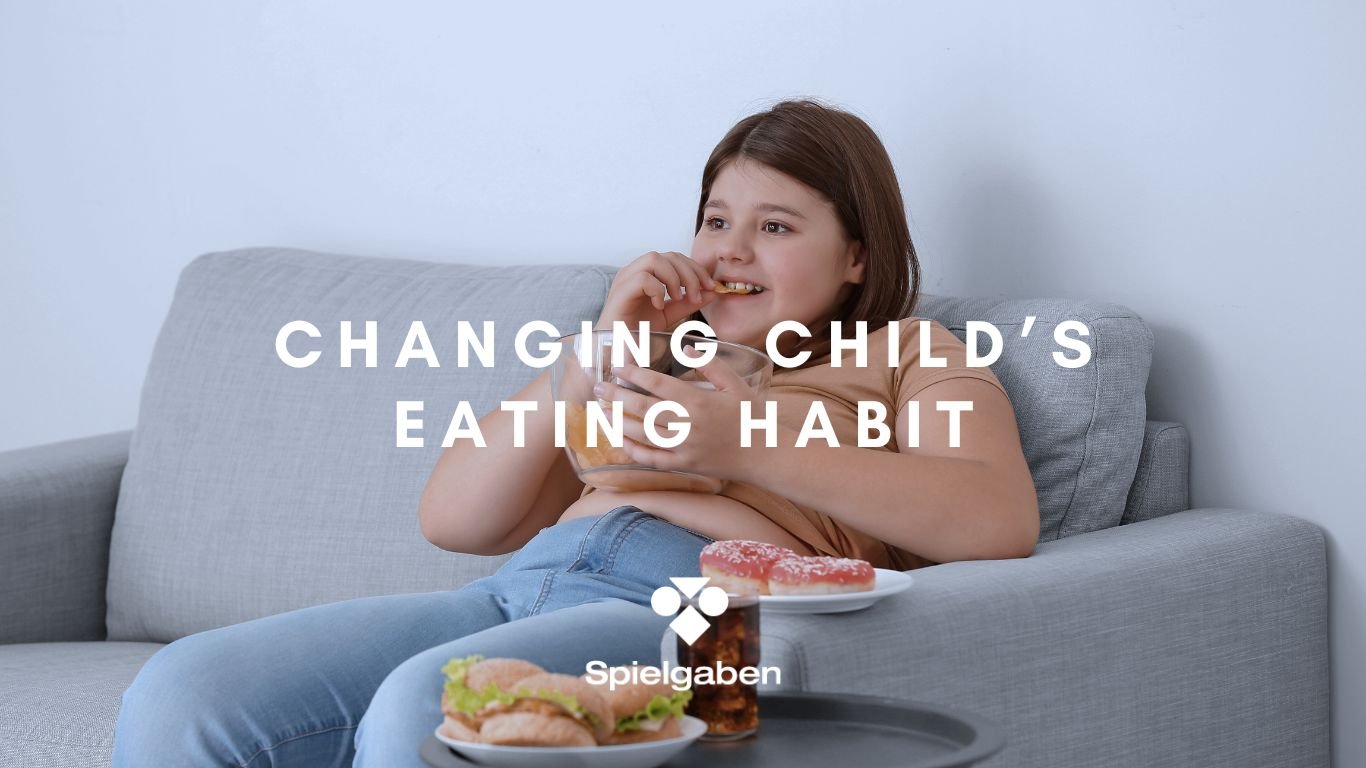Changing Your Child’s Eating Habits for a Healthier Body and Mind
As a parent, you naturally want your child to grow up healthy, both physically and mentally. One of the best ways to support this is by encouraging balanced, nutritious eating habits. It’s not just about physical health; what your child eats can have a profound impact on their brain development, emotional well-being, and overall behavior.
While changing your child’s eating habits may seem challenging at first, it is possible—and with consistency, it can become second nature for the entire family. In this guide, we’ll explore practical, easy-to-implement tips to help you guide your child toward healthier eating patterns, helping them achieve a well-balanced mind and body.
1. Understanding Emotional Eating: What Triggers Unhealthy Habits in Children
Like adults, children often eat for reasons other than hunger. Emotional eating can start early, and children may reach for snacks when they’re stressed, bored, anxious, or upset. A bad day at school, feeling overwhelmed by homework, or even boredom on a weekend can prompt them to seek comfort in sugary treats or processed snacks.
How to Recognize Emotional Eating in Children:
- Your child frequently asks for snacks even after meals.
- They tend to crave specific comfort foods like sweets, chips, or fast food when they are upset.
- Eating becomes a response to boredom or feelings of loneliness, not actual hunger.
As a parent, the first step is helping your child understand the difference between emotional eating and real hunger. It’s important to talk to them about how food fuels the body and mind, but it shouldn’t be used to manage emotions. Be open about how certain feelings, like sadness or stress, can make them want to eat, and encourage them to express these feelings in ways other than through food.
2. Mindful Eating: Teaching Your Child to Tune into Hunger Cues
Mindful eating is a powerful tool that can help children make more intentional food choices. Teaching your child to eat mindfully will help them better recognize when they are hungry versus when they are eating out of habit or boredom.
Practical Ways to Encourage Mindful Eating:
- Set mealtime routines: Ensure your child eats at designated times and spaces, like the dinner table. Avoid distractions like TV or smartphones during meals.
- Encourage slower eating: Ask your child to chew slowly and savor each bite, paying attention to flavors and textures. This gives the brain time to register when they are full.
- Talk about hunger cues: Regularly check in with your child during meals, asking them questions like, “Is your tummy feeling full yet?” or “Are you still hungry?” This helps them learn to stop eating when they’re satisfied, not stuffed.
When your child becomes more attuned to their body’s natural hunger signals, they’re more likely to eat the right portions and avoid overeating.
3. Balanced Nutrition: Creating Healthier, Brain-Boosting Meals
For children to have the energy to learn, grow, and play, it’s important they receive a variety of nutrients from all food groups. A well-balanced diet that supports brain development and emotional stability includes:
- Fruits and vegetables: Offer a variety of colorful fruits and veggies that are rich in vitamins and antioxidants. These boost brain health and help reduce inflammation.
- Whole grains: Foods like whole wheat bread, brown rice, and oats provide slow-releasing energy, helping your child stay focused throughout the day.
- Lean proteins: Chicken, fish, eggs, and beans offer essential building blocks for growing muscles and tissues, as well as promoting concentration.
- Healthy fats: Omega-3 fatty acids found in foods like salmon, walnuts, and flaxseeds are crucial for brain development and can improve mood and behavior.
Practical Tips for Creating Balanced Meals:
- Get creative with presentation: Use fun shapes, colorful plates, or create food art to make healthy foods more appealing.
- Involve your child in meal planning: Let them help pick out healthy recipes or ingredients. If they have a say in what goes on the table, they’ll be more excited to eat it.
- Make gradual changes: If your child is used to sugary cereals or processed snacks, start by making small, manageable swaps. For example, try mixing whole grain cereal with their favorite sugary brand until they adjust.
4. Reducing the “Hunger Hormone” Ghrelin and the Struggle of Overeating
One of the challenges parents face is dealing with children who feel hungry even after eating. This can be linked to the “hunger hormone” called ghrelin, which is known to spike when we restrict calories or cut out certain foods too quickly. For kids, these sudden changes can be hard to handle, making them feel hungrier than they actually are.
How to Manage Ghrelin Levels and Prevent Overeating:
- Serve small, frequent meals: Instead of three large meals, offer smaller portions throughout the day to keep hunger levels in check. This prevents dips in blood sugar that can lead to overeating.
- Prioritize high-fiber foods: Foods rich in fiber, like fruits, vegetables, and whole grains, help your child feel fuller for longer, reducing unnecessary snacking.
- Avoid extreme restrictions: While it’s important to limit junk food, being overly strict can make kids feel deprived and lead to binge eating. Instead, offer healthy alternatives to favorite treats and allow occasional indulgences in moderation.
5. Tackling Cravings: How to Help Your Child Overcome Temptations
Kids often crave sweet or salty snacks, and while an occasional treat is fine, it’s important not to let cravings dictate their diet. Cravings are often a sign of underlying emotional needs or habits that can be addressed with alternative strategies.
Practical Tips to Combat Cravings:
- Replace the activity, not just the food: If your child craves a cookie after school because it’s a routine, try replacing the snack with a different activity—like going for a walk, playing outside, or even reading together.
- Offer healthier alternatives: When your child wants something sweet, offer fruit with a small amount of whipped cream or a yogurt parfait. For salty cravings, try air-popped popcorn or baked sweet potato chips.
- Teach delayed gratification: Help your child learn to wait for a treat by setting a specific time for sweets (like after dinner) and explaining the importance of balance. This encourages self-control.
6. Positive Reinforcement: Rewarding Healthy Choices
Children respond well to encouragement and rewards. Rather than focusing on punishments for unhealthy eating, celebrate their progress toward healthier choices. Positive reinforcement helps build long-term healthy habits.
How to Implement Positive Reinforcement:
- Praise their efforts: Whenever your child makes a healthy choice, let them know you’re proud of them. Positive feedback can motivate them to continue making smart decisions.
- Create a reward system: Consider using a sticker chart or points system for each healthy choice, with a reward at the end of the week (like a fun family activity).
- Model healthy behaviors: Children learn by watching their parents. When they see you eating balanced meals and managing cravings, they’re more likely to follow suit.
7. Family Involvement: Making Healthy Eating a Group Effort
Children thrive when the whole family adopts healthy habits. When everyone is on the same page, it makes it easier for your child to embrace these changes.
Ways to Involve the Whole Family:
- Cook together: Involve your child in the kitchen. From chopping veggies to mixing ingredients, they’ll feel more connected to the meal when they help prepare it.
- Eat meals as a family: Sit down together for meals whenever possible. This fosters a healthy relationship with food and provides an opportunity to discuss the day, reducing the likelihood of mindless eating.
- Lead by example: Show your children that healthy eating isn’t about restriction, but about fueling your body with the right nutrients.
Conclusion
Incorporating these tips into your child’s daily routine will help them develop a healthy relationship with food, creating a strong foundation for their future physical and mental well-being. Remember, the goal isn’t perfection but progress. With time, your child will begin to make healthier choices that support their growing body and developing brain. And the best part? You’ll be guiding them every step of the way, ensuring they thrive both inside and out.













LEAVE A COMMENT